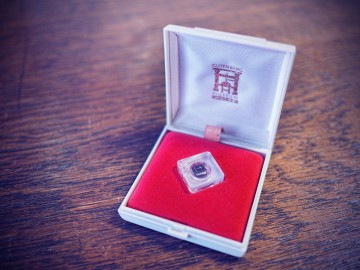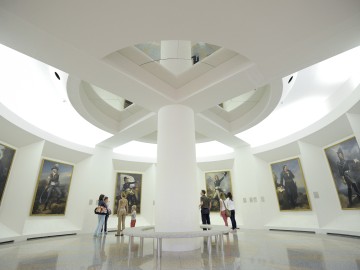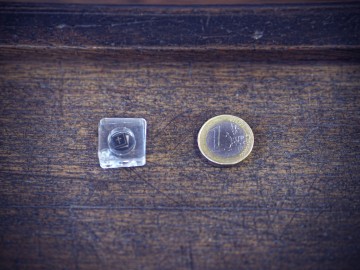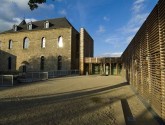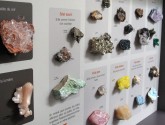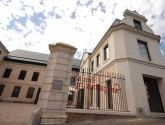5 museum curiosities to see!
In Atlantic Loire Valley, be amazed by unexpected or extraordinary pieces housed in the region's many museums. Here is a little selection of five that surprise visitors every time...
The world's smallest book - Musée de l’imprimerie, Nantes (Loire-Atlantique)
Smaller than a fingernail, it measures 3.5 mm x 3.5 mm! The world's smallest book is exhibited in a room of the Musée de l'Imprimerie, in Nantes. It contains the Lord's Prayer translated in seven languages and was acquired in the late 80s from the Musée Gutenberg de Mayence. "This work was designed to see just how precise engraving could be," explains Pascal Frondin, guide and art printer. "It's a true feat, we're really on micron levels here."
A chess king from the past - Musée du Château de Mayenne (Mayenne)
The Musée du Château de Mayenne has France's largest collection of board games used in the medieval times. These remarkable objects include a chess king made between the 5th and 7th century from deer antler. "At that time, chess was a highly evolved game that actually reproduced a battlefield, and was used to train knights," explains Mathieu Grandet, the museum's director. The famous king was discovered in the late 90s during the excavations in the monument's cellars.
A labyrinthine artwork - Musée d’Art et d’Histoire de Cholet (Anjou)
The Musée d'Art et d'Histoire de Cholet houses an astonishing work made in 1963 by the innovative Groupe de Recherche d'Art Visuel. This monumental creation takes the form of a labyrinth 21 m long and 2.5 m high, through which visitors are invited to walk. They explore 10 cells, each of which is a different universe, where they can interact (by choice or not!) with the structure. A revolutionary concept at the time!
The replica of the world's largest gold nugget - Musée du Mange Cailloux, Mortagne-sur-Sèvre (Vendée)
With its innovative layout that displays its mineral collections in a fun and inventive way, the Musée du Mange Cailloux is located in the walls of an old school, near the Puy du Fou. Visitors can see the replica of the world's largest gold nugget, discovered in 1869 in the heart of the Australian desert. "Before it was smelted, it weighted over one hundred kilos for 72 kilos of gold, and was 61 cm long," explains geologist Thierry Charrier, the museum's director and founder. A real gem!
An antique treasure - Carré Plantagenêt, Le Mans (Sarthe)
Discovered entirely by accident in 1997 by a young couple walking along the banks of the Huisne, the trésor des Sablons was partially donated to the city of Le Mans, which now displays it at the Carré Plantagenêt. "It is made up of 152 Gallic coins that form an amazing piece that's unique in France due to its size," gushes director Julie Bouillet. "Its exact provenance is uncertain." One thing's for sure, these gold "stater" coins date from the 1st century BC and mostly belonged to the Aulerques Cénomans, the people who gave the Sarthe capital its name.



